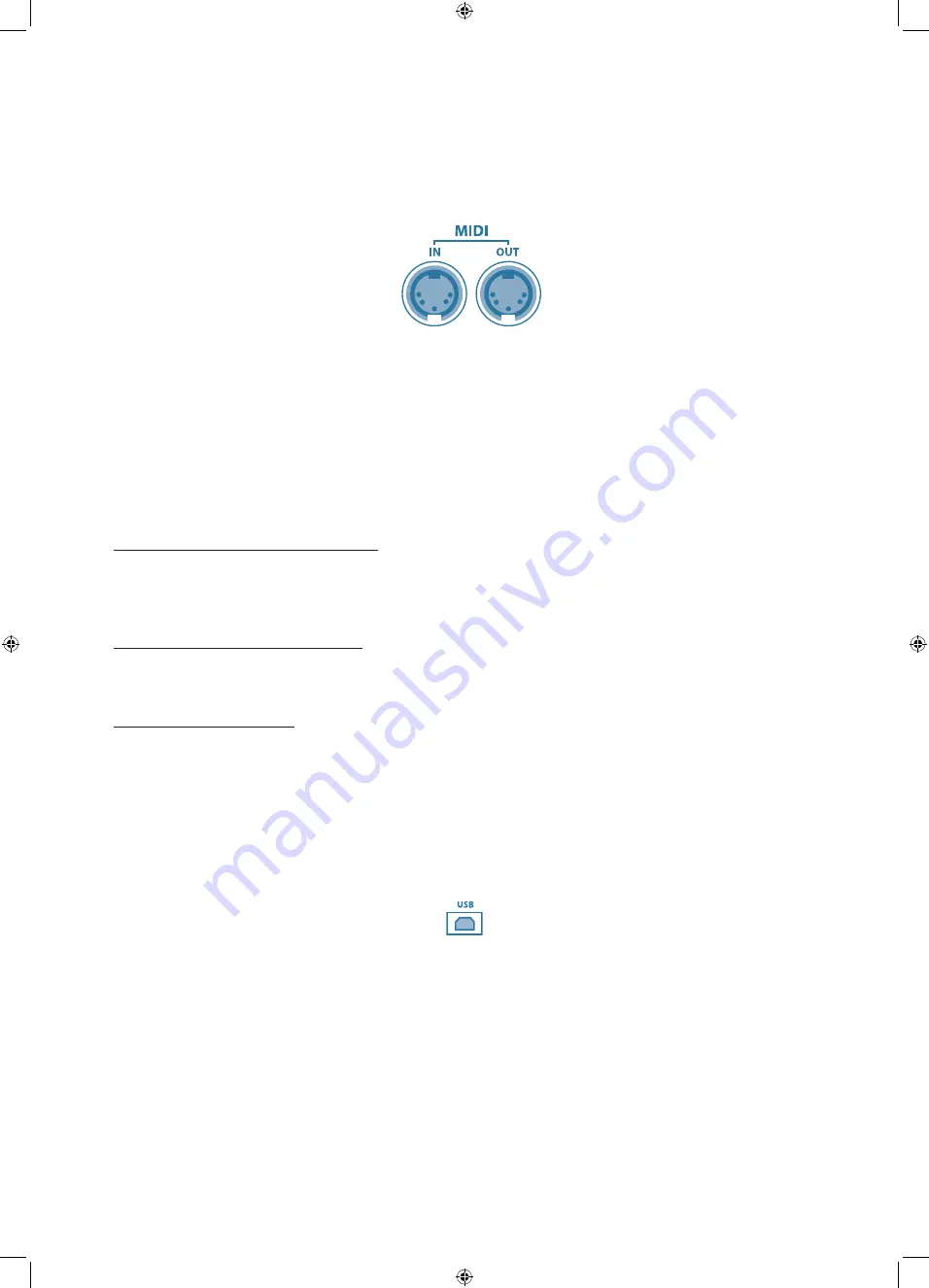
20
MIDI
MIDI (Musical Instrument Digital Interface) is a world-wide standard interface that enables electronic musi-
cal instruments and computers to communicate with each other so that instructions and other data can
pass between them. This makes it possible to create a system of MIDI instruments and devices that offer far
greater versatility and control than otherwise available with isolated instruments.
20
MIDI In
: This terminal receives data from an external MIDI device.
MIDI Out
: This terminal transmits data from the instrument to another MIDI device. The transmitted data
include the note and touch velocity produced while playing on the piano as well as voice changes.
The MIDI system in the unit has 16 channels numbered from 0 to 15. Each of them is responsible for an ins-
trument voice. When the piano receives control from an external device, the active channel is determined
by the MIDI setting of the piano or control message.
CONNECTION EXAMPLES
Output to an external sound generator :
Connect the MIDI Out terminal of the piano to the MIDI In terminal of an external device (keyboard, synthe-
sizer or sound module). The external device will respond to your playing. In this way, you can play two ins-
truments at the same time or play on your instrument to sound on another MIDI device
Output from an external MIDI device :
Connect the MIDI In terminal of the piano to the MIDI Out terminal of an external device. Data generated on
another device can sound on your piano.
Connection to a computer :
You can transmit your performance to a computer to utilize advanced recording, composing and editing
available from software on the computer. MIDI music stored on the computer can be played back through
your instrument
USB :
The USB connector allows you to connect the DPW 400 piano directly to your computer’s USB port.
The features of the USB interface are the same as MIDI, but both MIDI In and MIDI Out data run in the same
USB port and cable. The USB interface is compatible with Windows XP / Vista and MAC.
20



































